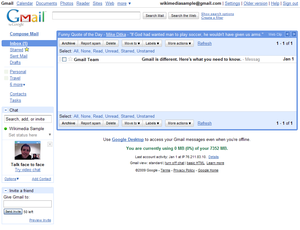A new site launches today and aims to use the auction method of marketing to allow users to sell news-related video to interested parties. We think it’s an interesting use of competitive bidding, and worth a look. Here’s the release.
January 18th, 2010 – New Orleans, LA – Bideo.com is a revolutionary online media exchange where creators of breaking news video and still images can manually protect and sell their content directly to publications in an auction setting. The Bideo message to creators is simple: stop giving away amazing videos and photos, and start selling them.
A tornado tearing across a field, a plane landing in a river, an amateur dunking on an NBA star, or exclusive shots of celebrities and athletes misbehaving, some pictures and videos are rare gems that are often the direct result of a camera phone being in the right place at the right time.
The increasing amount of valuable content being produced by citizen journalists is garnering interest from major publications, which are now welcoming an opportunity to access, purchase and publish such images. Brittain Stone, Photo Director for US Weekly, sees Bideo as a great resource for publications to obtain newsworthy material. “The Bideo format can be the efficient and trustworthy intermediary between those user creators and the buyer. It will be a way for us to tap into formerly ambivalent and often unattainable sources with ease and immediacy.”
HOW BIDEO WORKS
- The seller uploads an image from a computer or mobile device, adds a description and sets the auction terms. The original file is stored on a secure server while a watermarked copy is created and listed in a live auction.
- Bideo’s notification system automatically alerts relevant publications based on the item’s information. Sellers can also manually send notifications to their own list of potential buyers.
- Buyers assess the image and bid on the exclusive right to publish it. A buy now option is also available.
- The original file is transferred to the winning bidder’s account when the auction ends and payment is made.
- The seller receives 75% (and up to 85%) of the final bid price immediately after the sale is complete, and the seller agrees to honor the exclusive license purchased by the buyer.
Founder and CEO, Pike Barkerding, sees demand for a service like Bideo.com rapidly increasing. “Everyday more and more breaking images are published by citizen journalists who are not properly recognized or compensated for their work,” says Barkerding. “Bideo seeks to empower this growing army of ‘right-place-right-time’ creators by giving them a simple, secure and profitable way to promote their content to interested buyers.”
For buyers, Bideo serves as a central, organized source for newsworthy user-generated content that is otherwise difficult or impossible to obtain. “I think we [Us Weekly] miss a lot of interesting and topical images that aren’t represented by the established agencies and therefore don’t percolate up to us in a timely fashion if at all. On those occasions when these people do approach us, negotiations are skittish and drawn out because the potential sellers aren’t familiar with the ground rules of our particular marketplace,” says Stone.
Why an auction? “Newsworthy images can be difficult to price, especially non-professional, user-created images. Think eBay meets iReport. By posting content in an auction, sellers can let the open market decide the price and get the true market value for their work,” says Barkerding. “The same dynamic also creates a chance for buyers to find great deals on exclusive footage.”
Another benefit of the efficiency offered by Bideo is the ability for buyers and sellers to forego pricey middlemen (agencies), yielding lower cost to buyers, higher commissions to sellers, and greater immediacy throughout. “This also makes it attractive to professional photographers looking to sell a rare exclusive,” says Barkerding. “They can sell it autonomously on Bideo and get a higher return.”
Barkerding sees Bideo as a no-brainer alternative to the popular practice of giving content away for anything less than true market value. “Listing is free, and if you think it’s amazing, odds are someone wants to buy it. You set the price, you control the sale and, if it doesn’t sell, you can still give it away. So, why not try Bideo?”
Last summer, a private beta version of the site was launched in Los Angeles with a specific focus on celebrity content as a test market. During this soft rollout Bideo has been working with several L.A.-based photographers and celebrity publications including Us Weekly, TMZ, People Magazine, Access Hollywood, E! and Star Magazine. Bideo.com will be launched publicly on January 25, 2010 to serve and connect all forms of newsworthy content to publications in media markets throughout the world.
For more information on Bideo, please visit www.bideo.com/invitation.
For media inquiries, contact Matthew Bowes or Skipper Bond at 504-897-0462 or [email protected] and [email protected].
What do you think about this auction application? Is it a great, new way to expose auctions to the media or does it provide barriers to the news process? Let us know in the comments.




